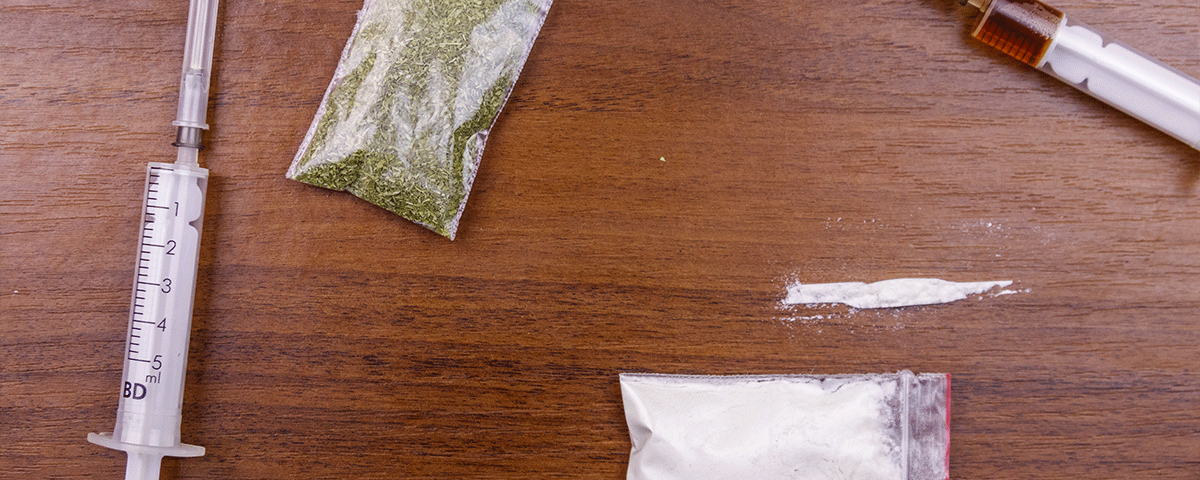People tend to have many questions and much confusion about drugs.
With so much information available, how do you know what is right and wrong? Many people wonder how addictive drugs differ from each other, particularly when it comes to cocaine and heroin. Considering that these are two of the most abused substances in the nation, our Banyan Texas rehab is sharing the difference between cocaine and heroin to clear up any misconceptions and spread awareness concerning their dangers and the importance of rehabilitation for addiction.
What Is Heroin Like?
Heroin is a street drug of the opioid class derived from morphine, a substance that is extracted from the seed pod of the opium poppy plant. Heroin is a highly addictive and illegal drug in most places, including the United States. It may be sold in the form of a white or brown powder, or a black sticky substance called black tar heroin.
People use heroin by snorting, smoking, or injecting it, all of which produce the same side effects but at different intensities and rates. When ingested in any form, heroin attaches itself to opioid receptors in the brain, spinal cord, and other areas of the body, such as the stomach and lungs. These receptors play a role in functions like pain relief, reward, and sedation.
As a result, when people get high on heroin, they may experience an extreme sense of euphoria, well-being, and drowsiness. Other short-term effects include constricted pupils, dry mouth, itching, and slowed heart rate and breathing.
In addition to using the drug on its own, some people take heroin and coke (cocaine) together, a practice known as speedballing. Some people speedball to increase the effects of heroin and cocaine or use one to counteract the effects of others.
Common heroin effects on the body and brain include:
- “Rush” of euphoria and pleasure
- Abscesses (swollen tissue filled with pus)
- Collapsed veins in people who inject it
- Constipation
- Damaged tissue inside the noses of people who snort it
- Difficulties concentrating
- Dry mouth
- Feelings of well being
- Flushed skin
- Going "on the nod," which is slipping back and forth between consciousness and semiconsciousness
- Heavy arms and legs
- Impaired judgment
- Infection of the heart lining and valves
- Insomnia
- Irregular menstrual cycles in women
- Itching
- Liver and kidney disease
- Lung problems like pneumonia
- Mental illnesses like depression and antisocial personality disorder
- Nausea and vomiting
- Sexual dysfunction in men
- Stomach pains
While this is not always the case, heroin also often contains additives or cutting agents used by dealers and manufacturers to make production more affordable and profitable. Heroin-cutting agents like sugar, starch, powdered milk, and household products can clog blood vessels, resulting in lung, kidney, and heart disease. Also, people who inject heroin tend to share drug paraphernalia such as needles, which, combined with impaired judgment, increases their risk of contracting diseases like HIV and hepatitis increases.
Long-term use of heroin often results in physical dependence and addiction. For most individuals, the first step in recovering is heroin detox. If you or someone you know wants to quit, our rehab in Texas can help you take that first step.
What Is Crack Cocaine?
Crack cocaine, or coke, is a central nervous system (CNS) stimulant derived from the leaves of a coca plant that is native to South America. Cocaine works by blocking the reuptake of dopamine in the brain, allowing the feel-good chemical to flood the individual's nervous system.
Usually, dopamine is recycled back into the cell that released it, shutting off communication between cells. However, cocaine blocks dopamine from being recycled, causing it to build up in the space between two nerve cells, which is otherwise known as the synapse. This flood of dopamine enforces reward and motivation associated with cocaine use, contributing to dependence and addiction.
Some common effects of cocaine include:
- Anxiety
- Bowel decay and stomach pains in people who ingest it orally
- Constricted blood vessels
- Cough, asthma, respiratory disease, and pneumonia in people who smoke it
- Dilated pupils
- Fast or irregular heartbeat
- Happiness and energy
- High body temperature and blood pressure
- Hypersensitivity to light, sound, and touch
- Increased risk of HIV, hepatitis, and other skin or bloodborne diseases in people who inject it
- Insomnia
- Irritability
- Loss of smell, nosebleeds, and trouble swallowing in people who snort it
- Mental alertness
- Muscle twitches
- Nausea and vomiting
- Paranoia
- Restlessness
Cocaine usually comes in the form of a white crystal powder. Like heroin, street dealers often combine cocaine with additives or cutting agents like cornstarch, talcum powder, and flour, which are physically similar and can help increase their profits. Dealers may also mix cocaine with drugs like amphetamine and fentanyl to increase its effects.
The risk of cocaine use largely stems from the additives it often contains. Users are either unaware or uncaring of these additives, raising their risk of adverse repercussions. Due to the many short and long-term effects of cocaine, it is advised that individuals seeking to quit using the drug should look into cocaine detox and addiction treatment at a professional facility like ours.
What Is the Difference Between Cocaine and Heroin?
Cocaine and heroin are both highly addictive substances but differ greatly in chemical composition, side effects, and the way they are used. Below are more details on the difference between heroin and cocaine and their similarities regarding addiction and rehabilitation.
They Are in Different Drug Classes
In any comparison of cocaine vs. heroin, an immediate difference between the two is their drug classes. Heroin is an opioid, and opioids are a class of drugs that works by binding themselves to mu-Opioid receptors to produce euphoria and pain relief. These drugs are also depressants that relax the body, slow activity in the brain, and impact basic functions like thinking, moving, and breathing. On the other hand, cocaine is part of the stimulant drug class, meaning that – unlike opioids – cocaine blocks the reuptake of dopamine in cells, flooding the brain with dopamine, increasing nerve cell communication, and contributing to side effects like extreme happiness and alertness.
Their Causes of Death Aren't the Same
Another major difference between heroin and cocaine is their cause of death in users. Because cocaine increases alertness as well as activity in the heart, most cocaine users die specifically from heart problems like heart attack, stroke, or cardiotoxicity. Cardiotoxicity is when the heart muscle is so damaged that it’s unable to pump blood throughout the body, causing organ failure and other problems.
As depressants, opioids like heroin slow down functions and mainly cause irregular or shallow breathing or respiratory depression. As a result, most heroin users die from respiratory depression, which occurs most commonly during a heroin overdose. Unfortunately, out of cocaine and heroin, only heroin has an antidote for overdose.
How Are Cocaine and Heroin Similar?
Both Contain Cutting Agents
Both heroin and crack contain additives or cutting agents used by dealers to make a bigger profit with less product. Many of these cutting agents, from household cleaners to paint thinner, increase users’ risks of health complications and overdose.
Both Are Addictive
The major similarity between cocaine and heroin is their potential for addiction. Both drugs are highly addictive, and most people who become addicted either require medicated-assisted treatment or inpatient care to recover.
Both Attack Neurotransmitters
Although both target different areas of the brain, cocaine and heroin ultimately work by impacting the release and levels of neurotransmitters, particularly dopamine. Dopamine is the main chemical that reinforces addictive behavior by way of reward. When a person abuses cocaine or heroin, dopamine levels in the brain increase, signaling to the mind and the rest of the body that this is something it wants to experience again, thus encouraging further drug-taking behavior.
Both Can Cause Heart Problems
Both crack and heroin are also linked to cardiovascular problems, although the former is more likely to than the latter. Heroin and cocaine impact the cardiovascular system because both contain chemicals that aren’t meant to enter the bloodstream. These contaminants and toxins block the veins and arteries in the heart, preventing the flow of blood and making it more difficult for the heart to function properly. Reduced contraction of the heart, slowed heart rate (bradycardia), dilation of blood vessels (vasodilation), and an infection of the heart valves and linings (infectious endocarditis) are all common side effects of heroin and cocaine use.
They Can Be Used The Same Ways
Another similarity between cocaine and heroin is the ways they can be used. Both drugs can be injected, snorted, smoked, or orally ingested. However, heroin is usually injected, while cocaine is usually smoked. Regardless of how either is used, they're still just as dangerous and addictive.
Help for Heroin and Cocaine Addiction
While they may share similarities, crack cocaine and heroin are entirely different in their classes and how they affect the brain and body. What is clear is that both are dangerous and addictive. If you or a loved one is battling heroin and/or cocaine addiction, we can help.
Call Banyan Treatment Centers today at 888-280-4763 or send us your contact information to learn more about our heroin rehab and cocaine rehab programs.
Related Reading:









